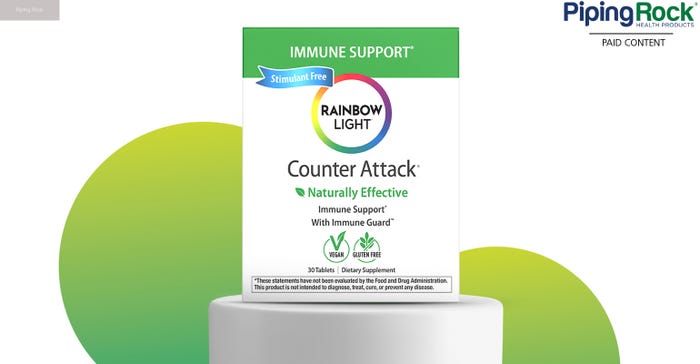
Edward Fletcher stepped into the North Carolina woods near his family’s wildflower nursery. Though only 11 years old, he was on professional duty looking for seed to propagate for planting stock. He was following a master wild harvester, a man in his late seventies.
“I remember that first time I went out with him,” Fletcher recalls five decades later. “I thought, ‘this guy’s nuts, he’s lost it,’ because we’re looking for bloodroot seeds and he’s looking up in the trees!” The elder harvester had never finished the third grade, according to Fletcher, and could neither read nor write with proficiency, but knew—and could write—the Latin binomials of most native plants. “This looks like the right area,” the elder said to Fletcher, turning his gaze to the densely foliated understory. “We’ll probably find some.” He was right without fail, Fletcher recalls. “Whatever the species we were looking for, he knew the tree type, he knew the exposure, he knew the shade.”
Fletcher was the fourth generation in his family’s business, Gardens of the Blue Ridge, founded in 1892. Later, he moved to another local centenarian company, the now defunct Wilcox Natural Products in nearby Boone. Today he is part of the raw material sourcing collaborative Herbal Ingenuity.
The scene he recalls—a child following an elder through the woods, learning where to go and what to look for—is common in the history of wild harvesting, a practice that’s been, by and large, handed down through generations, because, says Fletcher, “wildcrafting is just what it says it is. It’s a craft.”
But, whether the craft and tradition can survive in an era of digital disconnection rises as a primary challenge facing the herbs and botanicals category.
Traders of the lost art
“The people out there digging now, many of them, the first time they went out digging was with their grandma or grandpa,” says Michael McGuffin, president of American Herbal Products Association (AHPA). “They learned from the elders, they learned the best practices. It’s just country knowledge: what time you harvest, how much you harvest, where you harvest, what you do after you harvest.” Yet, while there’s a long tradition, McGuffin bemoans, few young people today want to pick up the craft.
Herbalist Roy Upton, founder, executive director and editor of the American Herbal Pharmacopoeia, is concerned, too. With farmers and pickers at the low revenue end of the supply chain, he says, “there’s an incentive for younger people to give up on wildcrafting and find better wage jobs in the cities, away from the land.” It’s increasingly hard to find pickers, and with the practice being so regional, it’s difficult to fill vacancies at the prices currently being paid.
Fletcher is unequivocal: “I see it dying all over.” The older practitioners are dying off, and their grandchildren are not picking it up. This is simple economics. “If the older gentlemen who were going out and harvesting were buying brand new iPads and driving Mercedes,” Fletcher says, “maybe the younger generation would want to get into it.”
Herb ‘n sprawl
The threat of extinction doesn’t stop at the human, cultural component. Ecosystems are threatened, too.
“There are good harvesters, and there are poachers,” says McGuffin. “It’s not exclusive. You don’t have to pass a test to go out and harvest wild plants, and some aren’t respectful of the need to protect both the plant populations and the environment.” These poachers are concerning, but they aren’t even a significant minority, he believes. More to the point, even the worst poachers are not the biggest threat to plant populations. “A whole lot is out of our control,” McGuffin says. “Mountain top removal coal mining didn’t exist 30 years ago. Believe me, they don’t go in first and collect all the goldenseal and ginseng and black cohosh off that mountain, they just bring in the bulldozers.” Golf courses and malls join the list alongside mining. “So, when we talk about our care of the environment, what we mean is, that part of the environment that we can still control. Our forces are really secondary to habitat loss through urban sprawl and housing sprawl and even sometimes to farming sprawl.”
Of the forces within the control of the botanicals industry, says McGuffin, “the tradition is to be mindful of not just this year’s collection but the preservation of the stock that will produce next year’s and the next decade's production.”
“This becomes a company decision on ethics,” says ethnobotanist Trish Flaster, executive director of Botanical Liaisons. Flaster has spent a lot of time among plants in native ecosystems as well as in herbal and pharmaceutical company conference rooms. “There are very few studies that look at sustainability of harvest.” Flaster has done some studies with the Forest Service, Garden Club of America and U.S. Fish and Wildlife, assessing cohosh and osha populations and establishing best practices. She is quick to admit, however, that skilled harvesters already know the best practices, some scientific, some otherwise: “Harvest a reasonable amount, less than 50 percent, especially if you’re taking root, more if taking aerial parts. Be respectful, by putting down seeds again, replanting if you’re collecting the roots in the fall … If you’re spiritually inclined, you can offer a prayer of thanks to nature or whatever spirit you relate to.” It’s in the harvester’s best interest to be environmentally sound in their practice, Flaster continues. “If they’re a good wild harvester, they’re actually doing an informal study of their own because they’re monitoring their own plots.”
For brands far down the supply chain to understand the impacts of raw materials purchases, Flaster says, field audits are in order, something that can be difficult to achieve. Many “diggers,” a unique and isolated bunch, says Flaster, are reluctant to share plot locations. Trade secrets begin in the forest, it seems. Still, trust can be built with the diggers, and ecological audits of the plots can be performed, looking for, among other things, unsealed holes. “A field audit is from field to facility. We have a lot of data now on the facility and very little information on the field.” Flaster names Naturex and Herbal Ingenuity as companies with good vetting systems. GNC and Walmart, too, companies that led the Supplement Safety Compliance Initiative (SSCI), resurrecting a 2006 AHPA document that Flaster helped author. The two companies formalized and updated it. “Recently, AHPA took that back and has now got a good document out there for GAP [Good Agricultural Practice] and GACP [Good Agricultural and Collection Practice]. They have a form and an easy-to-use checklist,” Flaster says. “It’s extremely thorough.”
AHPA reissued the document in March, McGuffin says, noting additional sections on good manufacturing practice in time for the Food Safety and Modernization Act. “It’s now become the GACP and GMP for herbal ingredients,” the latter more relevant to extract manufacturers. “A key part is the ‘c’ part, the collection practice,” McGuffin says. The next stage is to get the document vetted for applicability by farmers and consolidators. Part of the goal is that a manufacturer of dietary supplements buying wildcrafted herbs from wholesalers can have an indication that the collecting was done in compliance with the guidance, and that the plant has been properly identified—in the field, at the consolidator and by the wholesaler.
ID required
“If they’re not identified, guess what? They’re called adulterants because you’re not positive.” Flaster is adamant about identification at every step. “We have an adulteration problem,” she continues. “We certainly have organizations working on that, ABC’s [American Botanical Council] Botanical Adulteration Program is excellent and they’re highlighting that.” Part of the problem is failure to identify plants while they’re still plants. “We went to chemistry, and chemistry is not botany. You need botany and chemistry together, you can’t just have one.” Furthermore, she adds, “botany is not a static science. Botany is a science that keeps evolving as nature evolves and plants begin to look like one another or hybridize so species are not that easy to identify.” It all starts with a good specification, Flaster believes. She recommends voucher specimens, plant pressings of the aerial parts of the plant, “hopefully when fertile, maybe in flower, so it is undeniably the correct plant,” because, “unless the consolidators [are] absolutely sure, there can be some simple errors that lead, again, to adulteration.”
The early links of the supply chain are rustic, not a lab coat in sight. “Most collectors go home and clean and dehydrate the plants,” McGuffin describes. “There’s usually a local buyer, very regional. It might be the country store. It might be the hardware store that’s also been the aluminum can recycler for decades. They move them up to the regional consolidators. These are the ones we know, that bring it direct to manufacturers or at least to wholesale herb companies.”
In these steps, species identification is sensory-based observation: organoleptic or morphological. “They’re not going to send it out for chromatographic or DNA analysis,” says McGuffin.
Eventually the product will go downstream to the supplement manufacturer who has an obligation to re-verify. “So,” says McGuffin, “it’s verify, verify and then reverify. That pressure is good. It’s pushing those in the market who know what they’re doing above those who don’t.”
The bottom line for manufacturers, Flaster says, is FDA policy. “FDA requires 100 percent identification, so if FDA comes into your facility and you don’t have an adequate identification program, they’re going to question you, they’re going to write you up, you’ll get a warning.”
Forest or farm?
“Plants growing in their natural habitat have mostly self-selected those areas, and so reflect a somewhat optimal growing habitat,” says Upton. Such habitats require no inputs. Farmers often take years to emulate the environmental conditions to optimally grow medicinal plants, he says. “It can be done, but sometimes it may not be sustainable.”
Some crops are so abundant in the wild there’s no reason to bring them under cultivation, says Fletcher, “while with others there’s a benefit—either from the sustainability point of view or just the lack of abundance in the wild—to put them under cultivation, so we just need to divide that up.”
Other plants do benefit from management, however, either because left to their own, they’ll choke themselves out, or because a planted seed will germinate better than a fallen one, Fletcher says. “If you take the seed of a wild ginseng and you plant it properly … its germination rate can be increased tremendously,” he says. “So, there are certain species that, if done properly, we can improve propagation and growth by manual manipulation.”
“Ultimately, many of the plants that are currently wild harvested will have to be cultivated as the many pressures on habitats and wildcrafting communities continue,” says Upton. He notes, however, some plants, such as osha, completely resist any commercial cultivation. And threatened plants, such as lady’s slipper and false unicorn, have not been cultivated to the level needed to supply commercial markets. “This is specifically due to the need for intact ecosystems that include factors such as symbiotic relationships with other plants, the forest environment overall, and specific soil microorganisms that are not yet identified,” Upton says. “You can’t just take a botanical that needs the symbiosis that has developed over multiple millennia and transfer it to cultivation. It just does not work that way.”
Herbal economy
Fletcher notes that bringing plants into cultivation—requiring land, labor and other inputs—drives costs up, often doubling the price of the harvested plant. This is in part due to the unreasonably low prices being paid for wildcrafted plants. Upton references the Chiang Mai Declaration, which acknowledged the economic importance of medicinal plants to the sustainability of communities. “The herbal products industry needs to incentivize the continued practice of wildcrafting,” he says, “by developing direct relationships with wildcrafters, or wildcrafting collectives, and paying a fair wage for wildcrafted materials.”
“If we don’t start paying our wild harvesters more,” Fletcher says flatly, “we’re going to lose them.”
There’s a pull within the community, then, between the importance of wild harvesting and economic structures that work against the craft. Basic economics would suggest there’s ample room between the too little being paid today and the doubling of raw material costs the industry might face without wildcrafting.
“We’ve got customers now that want to actually highlight this,” Fletcher says. “They want to meet the harvesters, they want to tell their stories, they want to tell that story with their product.” Change is going to be driven from the top down, he believes. “Today’s educated consumer, they want to know more about where their product is coming from, [but] they are going to have to pay more for wildcrafted. It’s supply and demand. It’s out there, but somebody’s got to go harvest it.”
Not all plants are out there in equal measure, however. Solving the human side of the equation may simply swing the pressures back to the ecosystems. And the plants.
Identifying what plants can be used in small, medium, large and huge quantities is, Upton says, “part of the larger story.” He recommends modifying use based on those metrics to “minimize the use of herbs that are at risk of environmental loss, cultivate those plants that are used in the largest quantities, preserve habitats that can generate long-term revenues for communities through sustainable harvesting practices, and pay pickers and farmers a living wage through direct buying relationships.” Further, Upton suggests that with some judicious restraint, “we could reach for the more precious herbs only when needed for a therapeutic niche that cannot be addressed by other, more plentiful botanicals,” he says, “rather than popularizing such herbs in the commercial market to the point of extinction.”
At first blush, there’s a ring of idealism to these words. But the truth is, it’s not idealism at all. It’s the familiar—and somewhat daunting—call of true sustainability. The wisdom of plant medicine, unsurprisingly, calls on a near sacred respect for the components, people and place, that make the harvest possible.
This article appears in the November 2017: Confidence Issue of Nutrition Business Journal. The full issue is available for purchase here.
About the Author
You May Also Like






